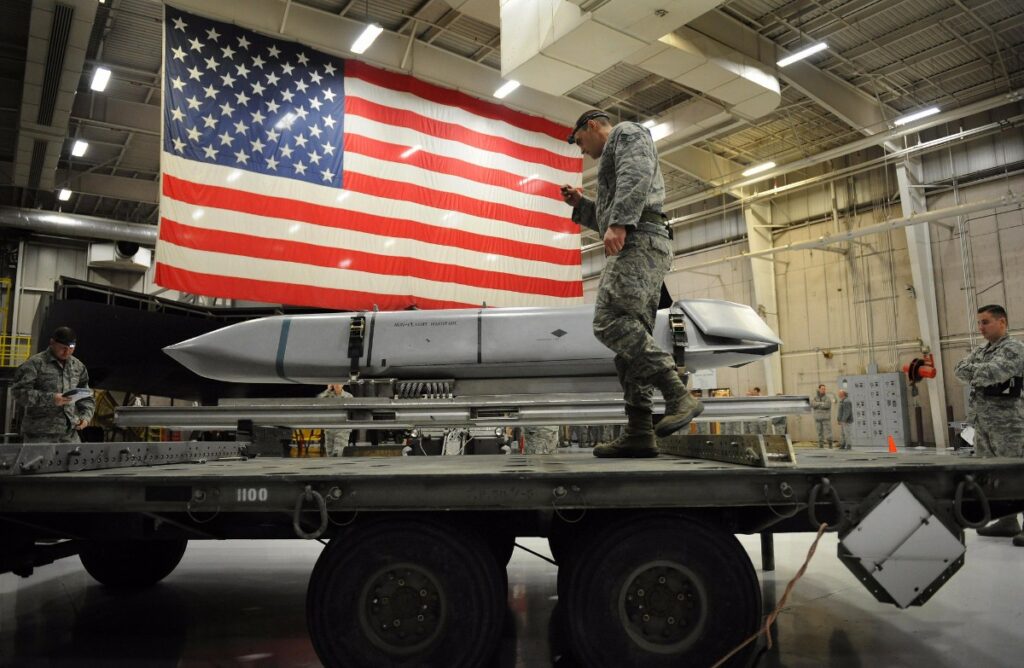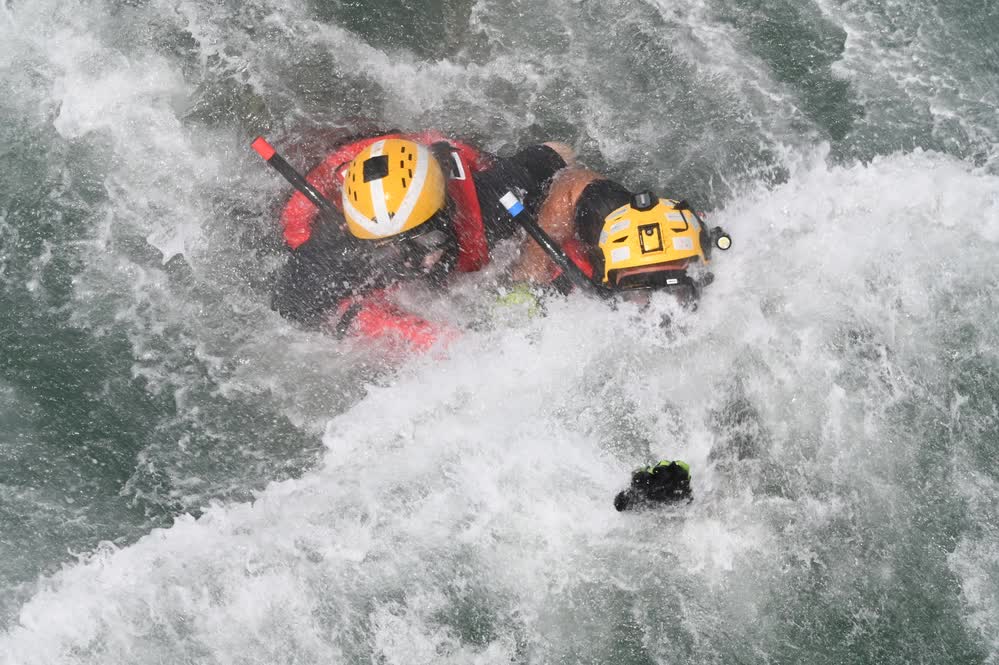Ever since the Enola Gay and Bockscar opened their bomb hatches and annihilated Hiroshima and Nagasaki, a nation’s ultimate military power and deterrence capability have been measured in nuclear terms. Today, a nation’s might is often quantified by how large its nuclear arsenals are and how advanced and destructive these weapons systems are. Gone are the days of turboprop aircraft and bulky atomic bombs. Now it’s all about missiles that can be launched from a plethora of platforms.
During the Cold War, a nuclear catastrophe was a palatable reality that trickled down and informed and affected how people lived their lives. Children at school would learn to hide under their desks, while nuclear bunkers were maintained across the country.
Nowadays, the danger of a nuclear war is significantly smaller but still a consideration. Of course, as more countries like North Korea, Pakistan, and Iran have acquired or aspire to acquire nuclear weapons, the danger may be increasing, as unstable regimes could either lose control of such weapons or launch them in a fit of madness.
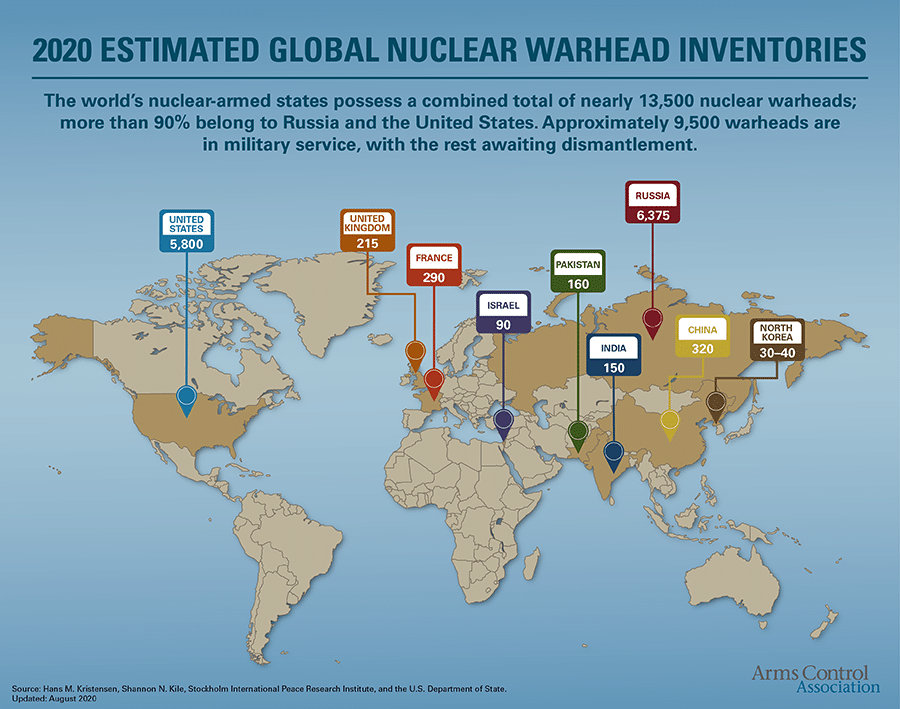
There are nine countries with a nuclear capability (U.S., Russia, U.K., France, China, India, Pakistan, Israel, and North Korea). Combined, these countries have approximately 13,500 nuclear warheads, including deployed, reserved, and stockpiled, with the majority of them distributed between the U.S. (~5,800) and Russia (~6,375).
However, of that number, approximately 3,825 are “deployed,” or placed in missiles or located on operational bases for immediate use. And only the traditional four countries (U.S., Russia, U.K., and France) maintain that readiness.
Related: NUCLEAR BAZOOKAS AND MINES?
As for China, India, Pakistan, North Korea, and Israel, although they do have nuclear warheads or fissile material to produce a nuclear warhead, they are stored in reserve and thus not available for immediate launch.
Ever since becoming a nuclear power, China has touted that it is a “no first use” nuclear power, meaning that it would never use nuclear weapons to strike first but only deploy them in response to a nuclear attack. However, as with everything war-related, such statements should be taken with a grain of salt. Trust but verify.
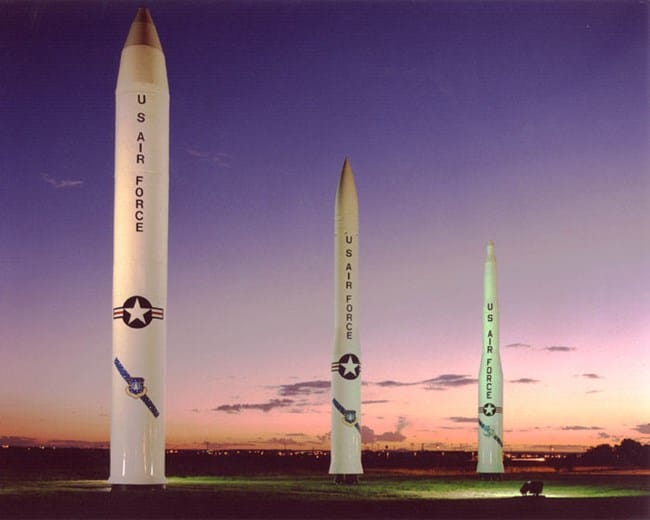
Although the list of nations with nuclear weapons has swelled since 1945, their nuclear capabilities and approach to deterrence aren’t the same. They could really be divided into two tiers.
In the first tier would be countries who have the coveted nuclear triad capability (land, air, sea), meaning that they can simultaneously launch nuclear weapons from all three domains.
In the second tier would be the countries that possess nuclear arsenals—fairly limited compared with the top dogs but still enough to wreak havoc to a non-nuclear state or to be a strategic nuisance to the superpowers. These nations are limited in the ways they can deliver nuclear weapons. North Korea, for instance, has invested heavily in nuclear ballistic missiles but lacks the means to drop nuclear weapons from strategic bombers or to launch them from submarines.
The U.S. military’s nuclear triad is comprised of a collection of platforms and weapons, primarily operated by the Air Force and Navy. Their mission is constant, 24/7/365 vigilance to either strike first or respond to a launch anywhere in the world. The U.S.’s nuclear triad is based on the concept that submarines are survivable, ICBMs responsive, and aircraft are flexible.
Related: NB-36 CRUSADER, AMERICA’S MASSIVE NUCLEAR-POWERED BOMBER
Land: Destruction from Two Continents Away
The U.S. military’s land nuclear deterrence revolves around the LGM-30G Minuteman III Intercontinental Ballistic Missile (ICBM). Although the actual numbers are classified, there are close to 400 Minuteman IIIs on constant standby in hardened silos across the U.S. Approximately 10,000 troops from across the services maintain and operate this capability.
An underground control center that has hardened, secured cables and other communications systems allows the president and secretary of defense instantaneous contact with each launch crew. A secondary airborne launch control capability ensures that the president’s order would be executed should the underground communications system fail due to enemy activity.
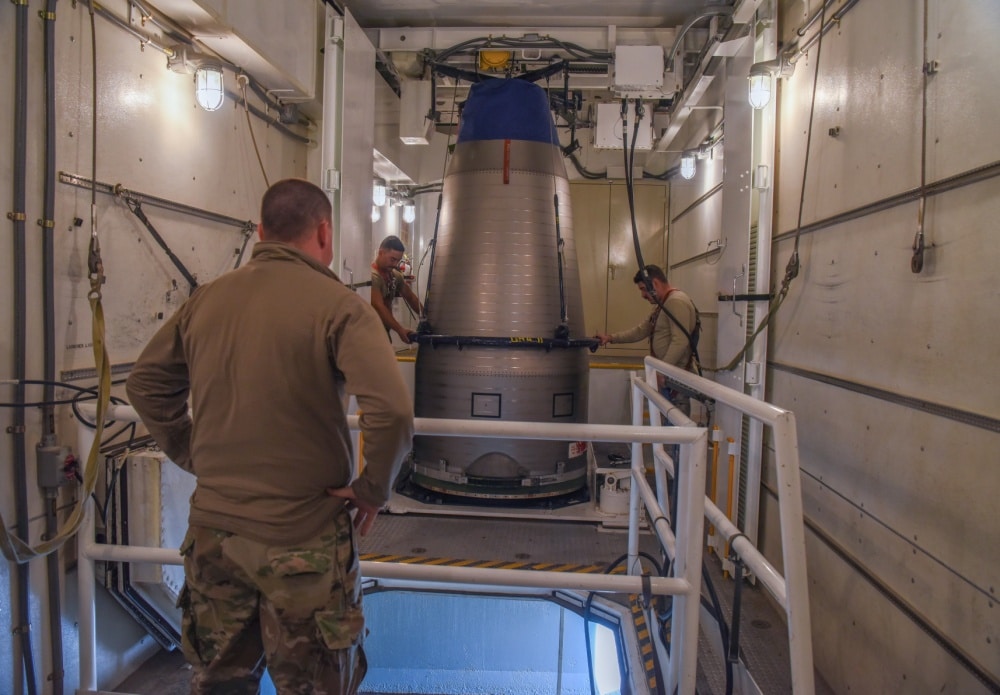
The Minuteman IIIs are mainly operated by the 90th Missile Wing, F.E. Warren Air Force Base, Wyoming, 341st Missile Wing, Malmstrom Air Force Base, Montana, and 91st Missile Wing, Minot Air Force Base, North Dakota.
The Pentagon is currently working on the modernization of its land-based nuclear deterrence and aims to replace the Minuteman III with a new ICMB and new facilities under the Ground-Based Strategic Deterrent program, which is expected to being in 2029.
Related: RUSSIA’S MASSIVELY POWERFUL NUKES ARE STRATEGIC DUDS
Air: The First Domain
The air is the first and only domain to be used for an operational deployment of a nuclear weapon.
America’s nuclear deterrence from the air is based around two aircraft, the venerable B-52 Stratofortress and the stealth B-2 Spirit. These two types of bombers can deliver several nuclear bombs to almost anywhere in the world in a matter of hours, thanks to strategic positioning and mid-air refueling capabilities. The B-52 can carry more (70,000 pounds) shorter distances than the B-2 (8,800 miles) but is faster (650 miles per hour). While the B-2 can carry less (40,000 pounds) and is also slower (630 miles per hour), it can operate undetected because of its stealth design.
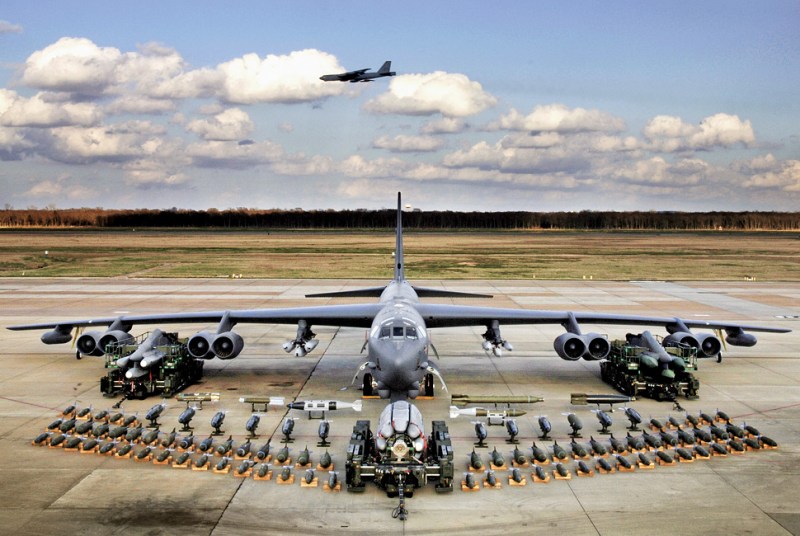
The Air Force fields a fleet of approximately 60 B-52s and B-2s bombers.
During the Cold War, when the nuclear apocalypse could have been one misunderstanding away, the Air Force had B-52 bombers carrying nuclear weapons in the air 24 hours a day, should the need arise to strike.
Related: HOW THE AIR FORCE DEVELOPED AN AIR-TO-AIR NUCLEAR MISSILE
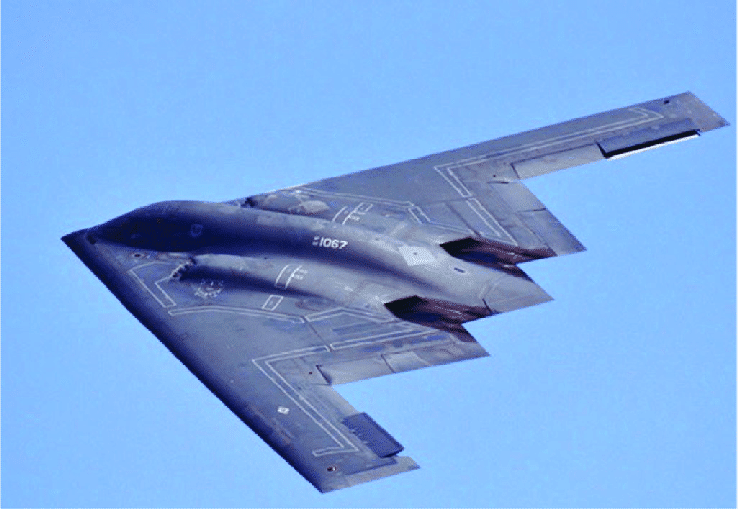
Sea: Nuclear Weapons from Below
The nuclear deterrence at sea is more balanced.
When it comes to the naval arm of the U.S. nuclear deterrence, the Navy’s 14 Ohio-class ballistic submarines are responsible for delivering nuclear warheads to the enemy should the worst-case scenario happen.
The Ohio-class nuclear submarines pack Trident ballistic missiles that can be outfitted with a nuclear warhead. Although nuclear weapons fired from submarines have a smaller yield than ICBMs, they are almost undetectable at the hands of a proficient crew and thus offer a constant headache to the opposite side and a viable deterrent.
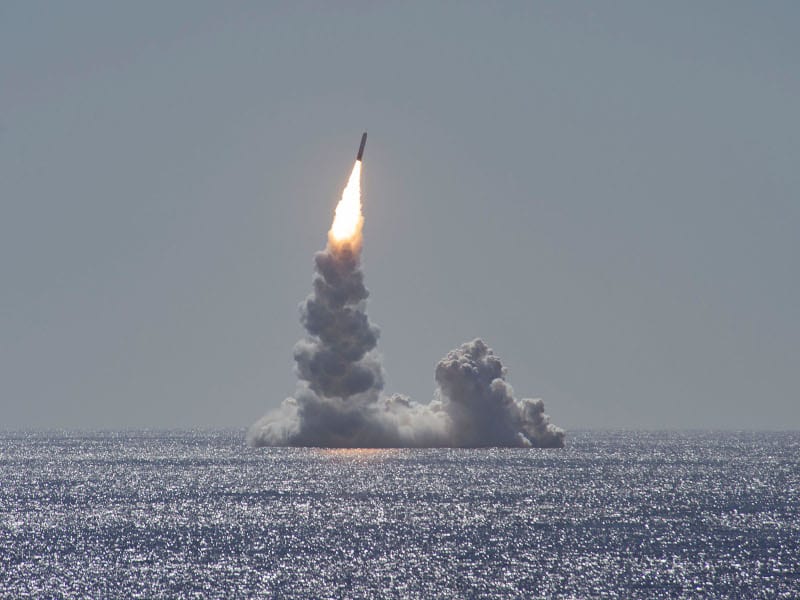
Russia has the second-largest nuclear ballistic missile submarine fleet with 12 vessels of different classes. China has between four and six subs—and building more—that can carry nuclear missiles. The Royal Navy has four Vanguard-class subs that can carry nuclear ballistic missiles, as does the French Navy with four Triomphant-class subs.
All of the above vessels can carry several nuclear warheads, ranging from 16 to 24 ballistic missiles of varying yields.
Nuclear Weapons in Other Countries
But there have been other nations who have entertained or actively pursued the idea of a nuclear arsenal.
Iraq and Libya both had secret nuclear weapons programs, but they stopped them, respectively prior to the 1991 Gulf War and in 2003. Belarus, Kazakhstan, and Ukraine inherited nuclear weapons after the collapse of the Soviet Union in 1991 but returned them to Russia. At various points, Argentina, Brazil, South Korea, Taiwan, and Turkey have entertained the idea of a nuclear weapons program but they don’t have any active ones. Finally, South Africa is the only nation that produced nuclear weapons from its secret nuclear program but unilaterally dismantled them following the end of Apartheid in the early 1990s.
